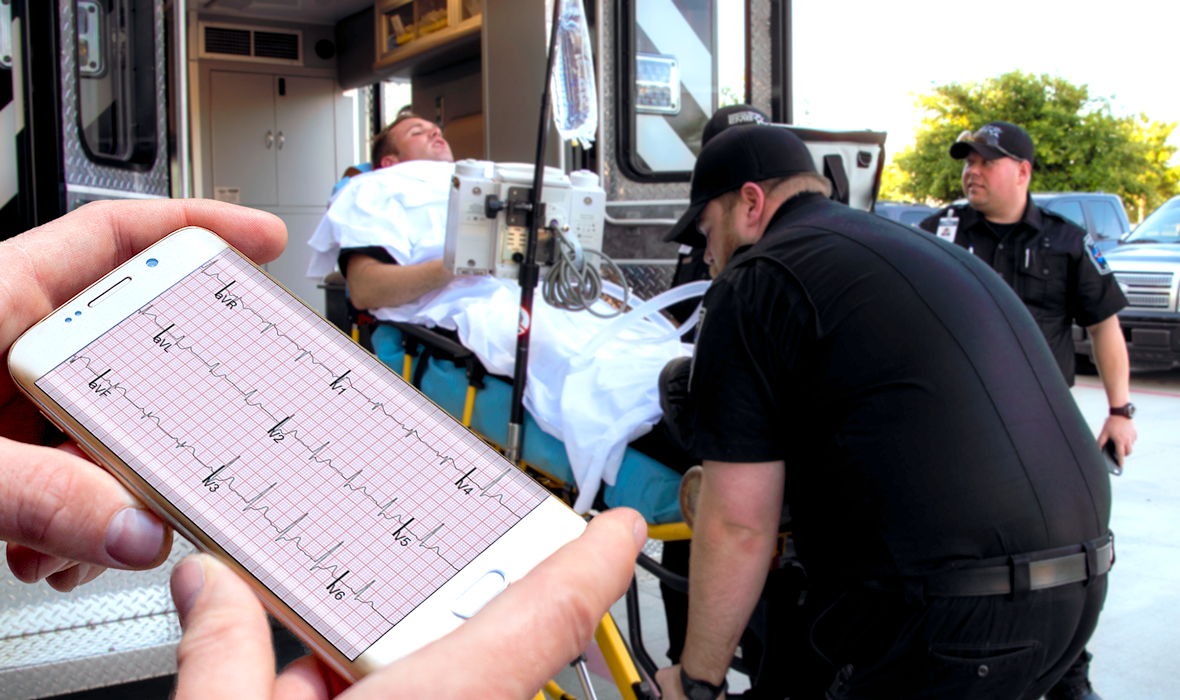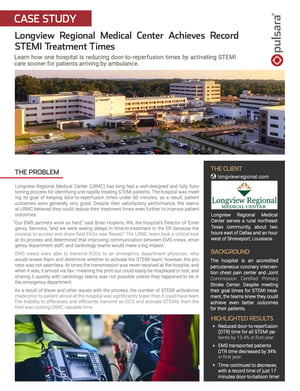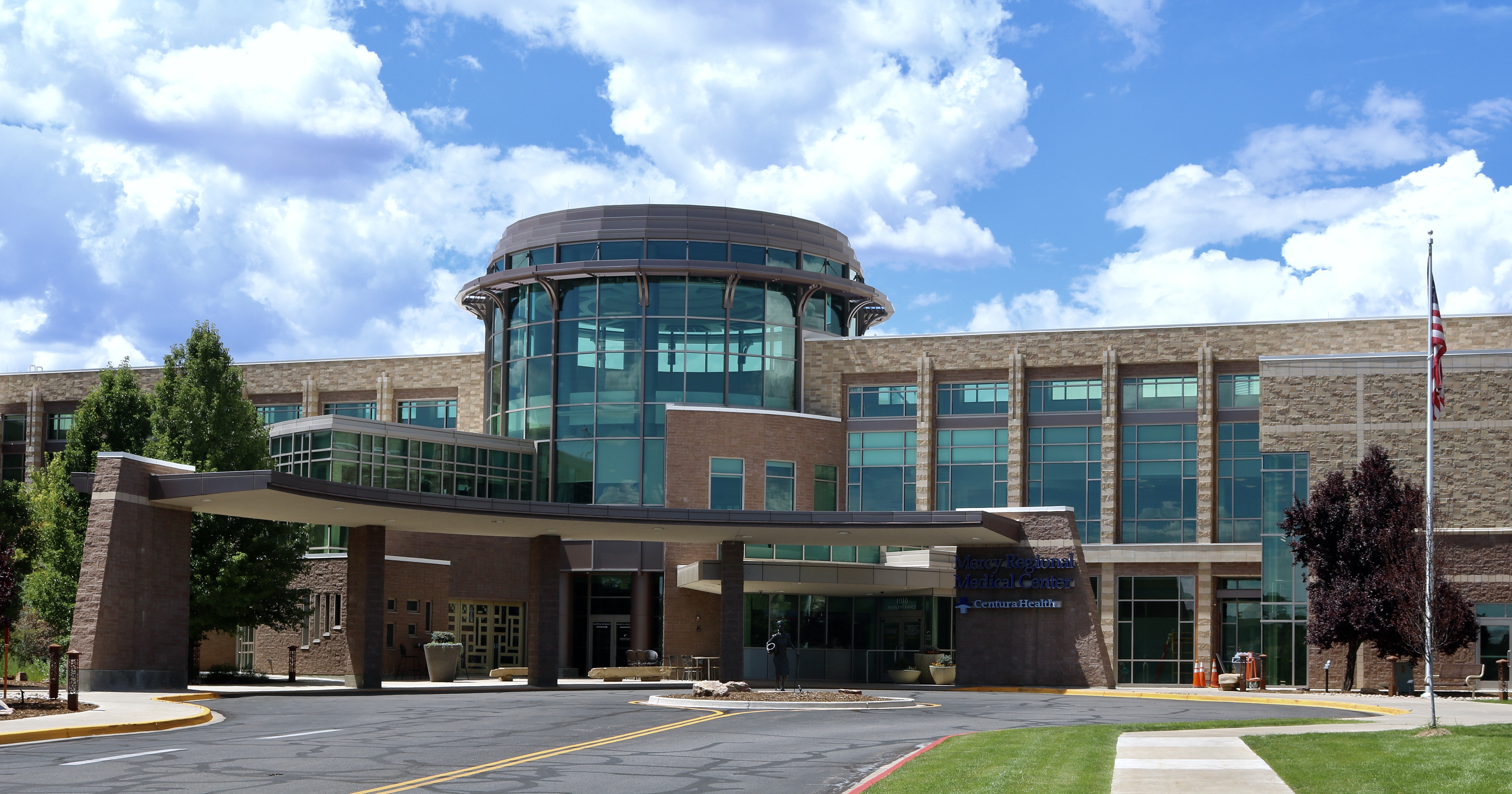New Research Shows Major Improvements in Rural STEMI Treatment Times With Pulsara
A new research study, published in The Journal of the American College of Cardiology (JACC), shows the use of Pulsara in a STEMI-focused initiative...
1 min read
 Kinsie Clarkson
:
Jun 12, 2020
Kinsie Clarkson
:
Jun 12, 2020

Longview Regional Medical Center (LRMC) has long had a well-designed and fully functioning process for identifying and rapidly treating STEMI patients. The hospital was meeting its goal of keeping door-to-reperfusion times under 60 minutes; as a result, patient outcomes were generally very good. Despite their satisfactory performance, the teams at LRMC believed they could reduce their treatment times even further to improve patient outcomes.
 “Our EMS partners work so hard,” said Brian Hopkins, RN, the hospital’s Director of Emergency Services, “and we were seeing delays in time-to-treatment in the ER because the process to access and share field EKGs was flawed.” The LRMC team took a critical look at its process and determined that improving communication between EMS crews, emergency department staff, and cardiology teams would make a big impact.
“Our EMS partners work so hard,” said Brian Hopkins, RN, the hospital’s Director of Emergency Services, “and we were seeing delays in time-to-treatment in the ER because the process to access and share field EKGs was flawed.” The LRMC team took a critical look at its process and determined that improving communication between EMS crews, emergency department staff, and cardiology teams would make a big impact.
EMS crews were able to transmit ECGs to an emergency department physician, who would review them and determine whether to activate the STEMI team; however, the process was not seamless. At times the transmission was never received at the hospital, and when it was, it arrived via fax—meaning the print-out could easily be misplaced or lost, and sharing it quickly with cardiology teams was not possible unless they happened to be in the emergency department.
As a result of these and other issues with the process, the number of STEMI activations made prior to patient arrival at the hospital was significantly lower than it could have been. The inability to effectively and efficiently transmit an ECG and activate STEMIs from the field was costing LRMC valuable time.
The team at Longview Regional Medical Center knew that to improve their performance, they needed to start by improving their process. To do so, they needed a simple and reliable way to consistently transmit the ECG from the field to the hospital so they could better prepare for incoming STEMI patients. To meet those needs, the team chose to implement Pulsara, a healthcare communication platform that connects teams across organizations.
LRMC’s efforts to improve STEMI treatment processes have paid dividends to those who matter most—their patients.
Download the case study to learn how Longview Regional cut door-to-reperfusion by 20 minutes times among patients transported by EMS.

A new research study, published in The Journal of the American College of Cardiology (JACC), shows the use of Pulsara in a STEMI-focused initiative...

Texas EMS Agency Slashes Hospital Offload Times For Low-Acuity Patients Down from 45 Minutes to 10.2 Minutes with Innovative Door-to-Lobby Protocol ...
![Burnout in EMS: Recognize it, Fight it, Overcome it [2025 EMS Trend Survey]](https://www.pulsara.com/hubfs/stressed-female-paramedic-1200x630.jpg)
Editor's Note: In July 2025, EMS1 and Fitch & Associates released their annual EMS trend survey, What Paramedics Want, proudly sponsored by Pulsara....